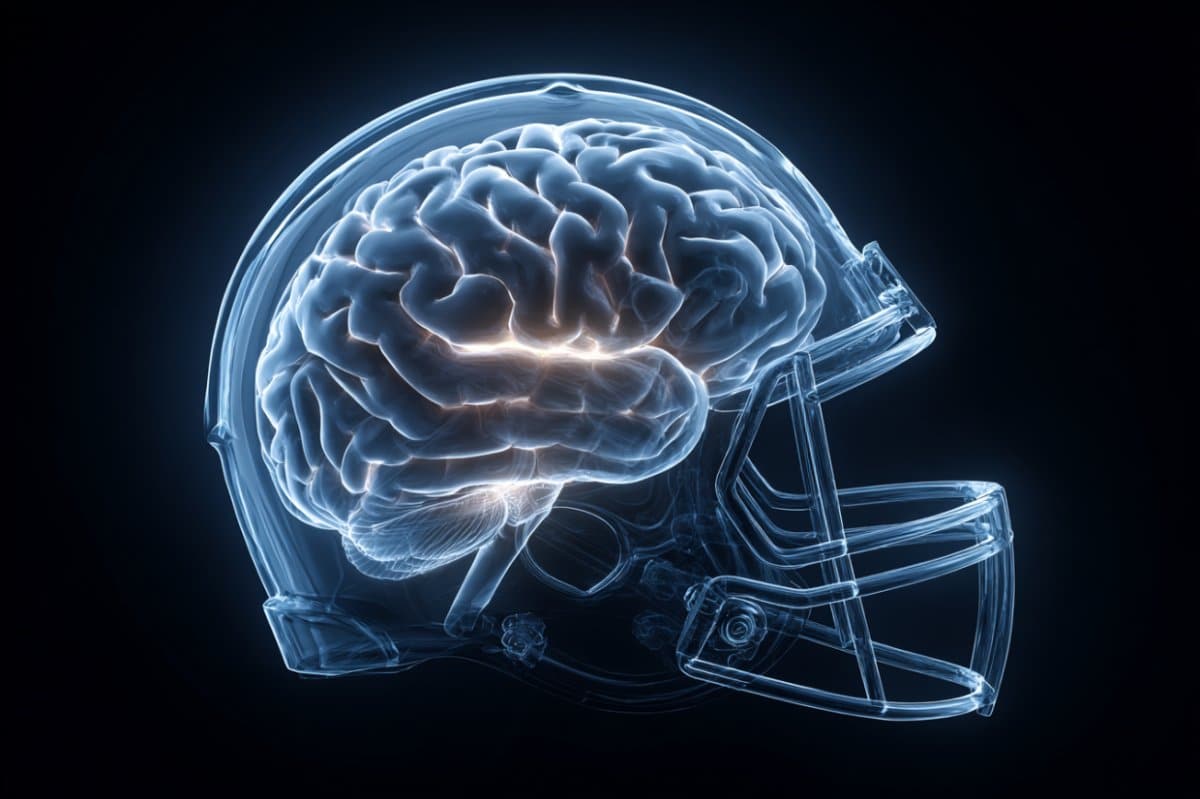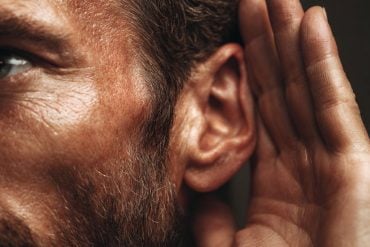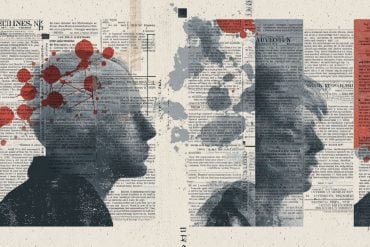Summary: Brain scans of former football players revealed subtle differences in brain grooves compared to men who never played contact sports, possibly marking early signs of chronic traumatic encephalopathy (CTE). Researchers found that players had shallower grooves in a key frontal region previously associated with CTE and that years of play correlated with structural changes in another area of the brain.
These findings mirror postmortem patterns seen in confirmed CTE cases, suggesting the potential for future early detection in living individuals. While more research is needed, the study represents a promising step toward identifying biomarkers for a disease that currently can only be diagnosed after death.
Key Facts
- Structural Differences: Football players had shallower left frontal grooves linked to regions affected in CTE.
- Experience Connection: Longer playing history was tied to changes in other brain grooves, showing a dose-response effect.
- Biomarker Potential: These MRI-detected differences could one day help identify individuals at risk for CTE while still alive.
Source: NYU Langone
Brain scans from American football players reveal subtle differences in the brain’s outer grooves when compared to scans from otherwise healthy men who never played contact or collision sports, a new study shows. Its authors say the findings could potentially predict which people are more at risk of chronic traumatic encephalopathy (CTE).
Like many neurodegenerative diseases, CTE is known to worsen over time, and it afflicts many who play contact and collision sports that involve repeated hits to the head. Popular contact sports include soccer and basketball, while common collision sports are football, hockey, and boxing.

Despite years of research, clinicians must still rely on autopsies after death to diagnose CTE, often marked by shrinking of the brain and the presence of tau protein deposits in brain grooves (sulci) near blood vessels.
Led by an international team of researchers and NYU Langone Health, the study is part of a long-term effort to develop tests for early detection of CTE. Researchers found that football players had shallower left superior frontal sulci on average than their nonfootball counterparts.
Left superior frontal sulci are located on a main groove that runs along the top, front, left side of the brain, which is known from past studies to be physiologically affected in CTE. Researchers say sulci are very small and no more than 1.5 millimeters wide and 15 millimeters deep.
Published online in the journal Brain Communications Sept. 11, the study also showed that football players with increasing years of playing experience had wider left occipitotemporal sulci — a groove that runs along the left side of the brain — than men not involved in contact sports.
The study included an analysis of single MRI brain scans from 169 former college and professional football players. These scans were compared to those from 54 carefully matched males of similar age, weight, and education, who did not play football or similar sports, and who did not have active military backgrounds.
“Our study shows what we believe can be the first structural differences that tell apart brains more at risk of developing chronic traumatic encephalopathy from the brains of people who are less at risk,” said study senior investigator Hector Arciniega, PhD, an assistant professor in the Department of Rehabilitation Medicine at the NYU Grossman School of Medicine.
“The work also proves that we can apply what we know about the physical changes observed postmortem in the brains of those with confirmed chronic traumatic encephalopathy to brain scans of living people at increased risk for it.”
Arciniega, who is also a member of NYU Langone’s Concussion Center, says the findings could be adopted as early signs, or biomarkers, for CTE, advancing efforts to develop a diagnostic test, so that future therapies can be applied before the damage becomes irreversible. Because CTE has no cure, identifying and staging the severity of the risk is essential for strategies to prevent and treat the disease.
It is unclear why differences were detected only on one side of the brain and not in the sulci on both hemispheres, the researchers say. While differences in sulcal brain structure were shown, no differences were observed regarding comparison psychological tests for memory and learning, estimates of the number of head hits and injuries, and for other brain scan measures of tau protein buildup.
The researchers caution that a clinical diagnostic test remains years away. But they note that if future studies validate their findings, additional biomarkers could be combined, as part of many brain features, into a comprehensive CTE risk assessment.
Arciniega says his team has plans to expand its investigations to include more contact and collision sports. He also will test for differences in several other parts of the brain to help identify people most at risk of developing CTE.
Study volunteers were college football players who had at least six years of playing experience and professional football players with at least 12 years of gameplay. Their roles were linemen, receivers, and running and defensive backs. Quarterbacks were excluded because of their relatively low exposure to head trauma.
Funding: Funding support for this study was provided by National Institute of Health grants U01NS093334, R01NS100952, K00NS1134919, R21NS140565, and L32MD016519. Additional funding support came from Alzheimer’s Association grant 25AARG-NTF-1377286.
Besides Arciniega, NYU Langone researchers involved in the study are study lead investigator Leonard Jung, MD, and study co-investigators Anya Mirmajlesi, BS, Jared Stearns, BS; Carina Heller, PhD, Brian Im, MD, Shae Datta, MD, and Laura Balcer, MD. Other study co-investigators are Katherine Breedlove, Nicholas Kim, Alana Wickham, Daniel Daneshvar, MD, PhD, Tim Weigand, Tashrif Billah, Ofer Pasternak, PhD, Michael Coleman, Alexander Lin, PhD, and Martha Shenton, PhD, at Harvard Medical School in Boston; Omar John, MD, Zachary Baucom, PhD, Michael Alosco, PhD, and Robert Stern, at Boston University; Yi Su, PhD, Hillary Protas, PhD, and Eric Reiman, MD, at Arizona State University in Phoenix; Charles Adler, MD, PhD, at the Mayo Clinic in Arizona in Scottsdale; Charles Bernick, MD, MPH, at the Cleveland Clinic Lou Ruvo Center for Brain Health in Las Vegas; Jeffrey Cummings, MD, ScD, at the University of Nevada, Las Vegas; Sylvain Bouix, PhD, at the Universite du Quebec in Montreal; and study co-senior investigator Inga Koerte, MD, PhD, at the Ludwig-Maximilians-Universitat Munchen in Germany.
Key Questions Answered:
A: Researchers observed shallower grooves in the left superior frontal region and wider grooves in another area, suggesting physical alterations linked to repeated head impacts.
A: They may represent the first measurable structural differences in living people that correlate with known postmortem CTE features, moving closer to early diagnosis.
A: Not yet—researchers caution that larger studies are needed, but this work lays the foundation for future diagnostic tools.
About this CTE and neurology research news
Author: David March
Source: NYU Langone
Contact: David March – NYU Langone
Image: The image is credited to Neuroscience News
Original Research: Open access.
“Sulcal morphology in former American football players” by Hector Arciniega et al. Brain Communications
Abstract
Sulcal morphology in former American football players
Repetitive head impacts are associated with structural brain changes and an increased risk for chronic traumatic encephalopathy, a progressive neurodegenerative disease that can only be diagnosed after death.
Chronic traumatic encephalopathy is defined by the abnormal accumulation of phosphorylated tau protein, particularly at the depths of the superior frontal sulci, suggesting that sulcal morphology may serve as a relevant structural biomarker.
Contact sport athletes, such as former football players, are at elevated risk due to their prolonged exposure to repetitive head impacts.
Cortical atrophy linked to underlying tau accumulation may result in shallower and wider sulci, potentially making sulcal morphology an imaging marker for identifying individuals at risk for this disease.
This study investigated sulcal morphological differences in former football players and examined associations with age, football-related exposure, clinical diagnosis of traumatic encephalopathy syndrome, levels of certainty for chronic traumatic encephalopathy pathology, neuropsychological performance, and positron emission tomography imaging using flortaucipir.
We analysed structural magnetic resonance imaging data from 169 male former football players (mean age 57.2 (8.2) years, range 45–74) and 54 age-matched, unexposed asymptomatic male controls (mean age 59.4 (8.5) years, range 45–74).
Sulcal depth and width were quantified using the CalcSulc, focusing on two regions in each hemisphere commonly affected by chronic traumatic encephalopathy pathology: the superior frontal and occipitotemporal sulci.
Generalized least squares models were used to assess group differences and interactions with age and football exposure variables, including age of first exposure, total years played, and cumulative head impact exposure.
An analysis of covariance evaluated relationships between sulcal morphology, clinical measures, and flortaucipir uptake, adjusting for age, race, body mass index, education, imaging site, apolipoprotein E4 status, and total intracranial volume.
Former football players demonstrated significantly shallower sulcal depth in the left superior frontal sulcus compared to unexposed controls. Earlier age of first exposure and longer football careers were associated with greater widening of the left occipitotemporal sulcus.
Higher cumulative head impact exposure was linked to reduced sulcal depth in the left superior frontal region. However, sulcal morphology was not associated with clinical diagnosis, levels of certainty, neuropsychological test performance, or flortaucipir imaging.
These findings suggest that sulcal morphology may reflect cumulative exposure to repetitive head impacts, particularly in brain regions vulnerable to chronic traumatic encephalopathy pathology.
Future ante- and post-mortem validation studies are needed to determine whether sulcal morphology can serve as a reliable in vivo biomarker of risk.






